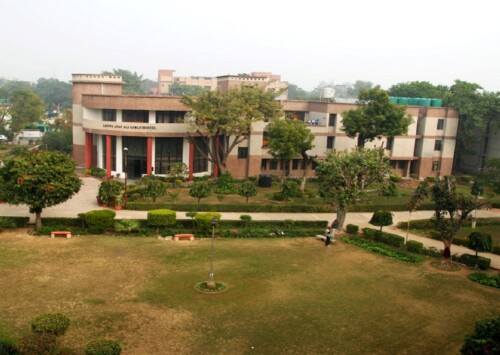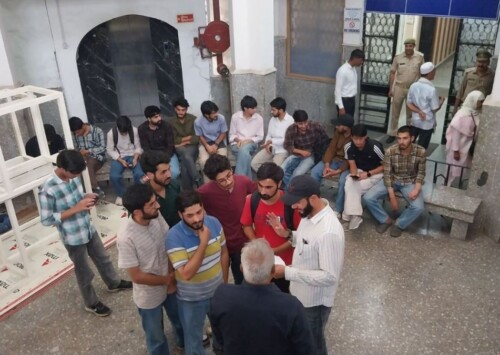Humayunpur: Where Delhi meets North-East, one meal at a time
Heart of Northeastern India in South Delhi
In the midst of South Delhi’s chaotic sprawl lies Humayunpur, a small urban village with a big cultural soul. Once rooted in Jat traditions, it now beats to the rhythm of North-East India, filled with cosy cafes, sizzling kitchens, and stories of migration and belonging.
Nestled amid the bustling heart of South Delhi lies Humayunpur, a 17th-century urban village steeped in history and tradition. Once a self-contained Jat-owned settlement, Humayunpur has evolved into a vibrant cultural tapestry, where centuries-old village roots coexist with the dynamic energy of migrants from India’s North-Eastern states and neighbouring countries.
This remarkable fusion has transformed Humayunpur into a living mosaic of cultures, cuisines, and stories that make it one of Delhi’s most fascinating neighbourhoods.
At first glance, Humayunpur presents a striking juxtaposition of old and new. On one side, wide roads lined with spacious bungalows, each adorned with expansive balconies, exude the calm and affluence of South Delhi. On the other, the narrow, bustling lanes of the village pulse with life, where homes are packed tightly together, leaving barely enough space for pedestrians to pass. A large signboard from the Delhi Development Authority greets visitors, welcoming them to this extraordinary enclave.
As one steps into the neighbourhood, the sounds of beeping auto-rickshaws, the chatter of shopkeepers, and the aroma of simmering spices create an immersive sensory experience, hinting at the cultural richness within.
Often called South Delhi’s Majnu ka Tila, in reference to the culture and food Humayunpur has emerged as the city’s hub for North-Eastern, Nepali, Tibetan, Bhutanese, and even Korean cuisine. The area now resonates with the vibrant pulse of migrant communities who have made this historic village their home.
Also Read North East is an Undiscovered Gem of Tourism
Originally a farming village, Humayunpur’s early history was marked by the presence of small Muslim settlements during the medieval period. By the 17th century, the area became dominated by prominent Jat families, including the Phogats, Tokas, Mahalwals and Singhs. While much of the surrounding farmland was acquired by real estate developers such as DLF in the 1960s, Humayunpur retained its independence, continuing to thrive as a self-contained neighbourhood.
The demographic landscape of Humayunpur began to shift significantly by the 1990s. Migrants from Bihar, Uttar Pradesh, Haryana, and Nepal settled here, followed later by enthusiastic youngsters and families from the North-Eastern states and Tibet. Today, Assam, Nagaland, Manipur, Sikkim, and other North-Eastern states have made a lasting imprint on the neighbourhood’s character. These communities brought with them their distinctive languages, clothing, and most importantly, their food – an aspect that has become central to Humayunpur’s identity.
The arrival of these communities did more than populate empty houses, it infused the village with new life, energy, and entrepreneurial spirit. Shops, eateries, and small businesses flourished, reflecting the rich cultural heritage of their owners.
Over the years, the restaurants of Humayunpur have become more than just places to eat – they have become cultural anchors in the community. Each establishment tells a story, introducing locals and Delhi’s cosmopolitan crowd to flavours, spices, and cooking traditions that were once rare in the capital. These eateries blend authenticity with warmth, inviting guests not just to taste, but to experience the culture, rituals, and stories behind each dish. Word-of-mouth recommendations, glowing social media reviews, and the lure of new, unexplored flavours gradually turned first-time visitors into loyal regulars. Humayunpur’s culinary scene has become a bridge between cultures, sparking curiosity, connection, and appreciation for the vibrant traditions of India’s North-East.
Among the pioneers of this culinary transformation is Ruby Brahma, a native of Diphu town in Assam. After leaving a corporate career, she founded her restaurant, Oh! Assam, in 2017 with a mission to introduce authentic Assamese cuisine to Delhi.
“Back home, I used to cook during get-togethers. While working in the corporate sector, I came up with the idea of setting up Oh! Assam because of the absence of Assamese food in Delhi. I wanted to bring in a small part representation of Assam. Back in 2017, when I had just opened the restaurant, we did not have customers. In the last three to four years, more and more customers started pouring in and have been wanting to try Assamese cuisine,” Brahma tells Media India Group.
Today, Oh! Assam stands as a testament to the city’s growing appetite for North-Eastern food, drawing customers from across Delhi.
Also Read Tripura: Wonders of the hidden gem of Northeast India
Equally influential is Heritage Naga, which celebrates the rich culinary heritage of Nagaland. Founded by Rocila Patton, a native of Dimapur, in September 2017, the restaurant serves authentic Naga dishes crafted from ingredients sourced directly from her hometown. Patton had previously co-founded Hornbill Restaurant a decade earlier but sought to carve her own path with Heritage Naga.
“I was the only woman chef in the team when we started the Hornbill Restaurant. In September 2017, I wanted to start something else, so Heritage Naga was my own creation. It was not an easy journey since people were reluctant to eat something new. Since my speciality is Naga cuisine, I get my raw materials transported by train from my hometown. After Covid-19, more people started coming. Today, on a daily basis, approximately 100 people visit apart from the online deliveries that we make. The restaurant’s speciality is the smoked pork and chicken. My childhood memories are of making these dishes during Christmas back at home,” Patton tells Media India Group.
What makes Humayunpur truly remarkable is how these restaurants have become cultural ambassadors, fostering understanding and appreciation between communities. Locals who once had little exposure to North-Eastern traditions now come to Humayunpur not only for food but for a cultural experience. Festivals, family gatherings, and casual meet-ups are all infused with the colours, music, and flavours of the North-East. The aroma of smoked meats, tangy pickles, and unique spices spills into the streets, creating an atmosphere that is at once foreign and familiar.
Humayunpur’s transformation also illustrates the resilience and adaptability of migrant communities. Despite arriving in a city far from home, these families have established networks, businesses, and social spaces that preserve their heritage while integrating seamlessly with Delhi’s urban rhythm.
Today, Humayunpur is more than just an urban village; it is a vibrant microcosm of India’s diversity. The neighbourhood exemplifies how migration, culture, and entrepreneurship can breathe new life into historic spaces. From the narrow alleys to the bustling restaurants, from Jat families preserving centuries-old traditions to North-Eastern migrants sharing their culinary heritage, Humayunpur is a living example of cultural coexistence. Its streets tell stories of adaptation, resilience, and connection, where food, festivals, and friendships intertwine to create a community that is both deeply rooted and cosmopolitan.
For anyone looking to explore Delhi beyond the usual tourist trail, Humayunpur offers an unforgettable journey through streets alive with stories, aromas, and the indomitable spirit of a community that has carved out its place in the city’s heart.










